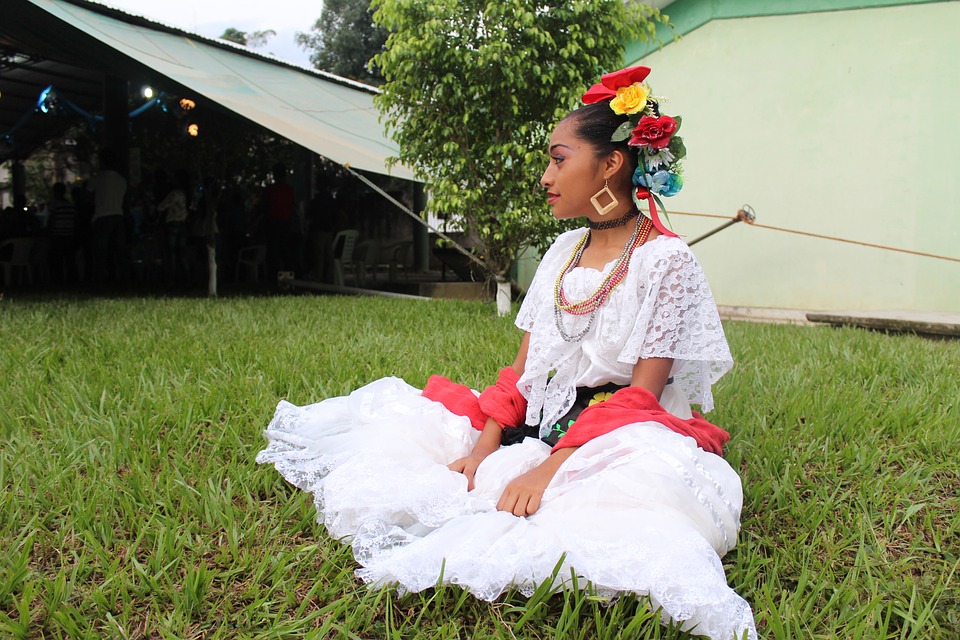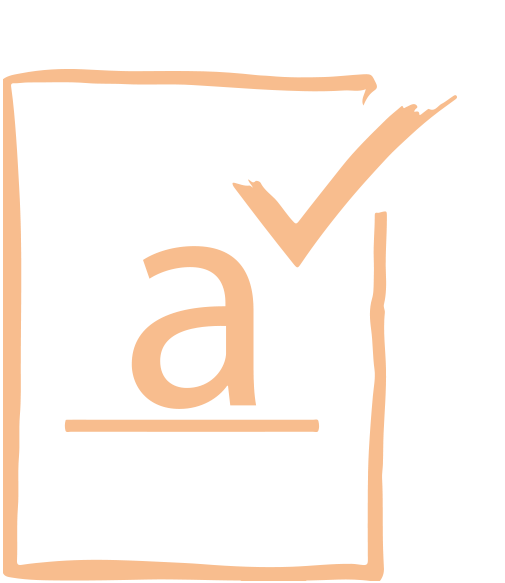In this section, you will explore how to describe the same subject giving several of its qualities.
In the content, you will learn about the correct order of adjectives. Then, you will develop your language skills in English.
There is also a self-assessment section that will help you practice what you have learnt.
By the end of this lesson you will:
Use different adjectives to express people´s qualities regarding clothing and places.
Exercise 1
When we describe things, it is common to use different adjectives to talk about their characteristics. These adjectives can express an opinion, purpose, colour, origin and other properties of something.
Let’s see some examples:
Content
We usually use them before a noun:
I bought a beautiful dress in Mitla.
Alternatively, after the verb to be:
The dress I bought in Mitla is beautiful.
However, what happens if we want to use more than one adjective?
It is important that you know that in English there is a specific order for them.
Tom lives in a nice new house.
In the kitchen, there was a beautiful large round wooden table.
Adjectives like:
new/large/round/wooden
are fact adjectives.
They give us objective information about something (age, size, color, etc.).
Adjectives like:
nice/beautiful
are opinion adjectives.
They tell us what someone thinks of something.
Opinion adjectives usually go before fact adjectives.
| Opinion | Size | Shape | Condition | Age | Colour | Pattern | Origin | Material | Purpose | Noun | |
| 1. | gorgeous | tall | young | Australian | woman | ||||||
| 2. | lovely | long | pink | spotty | plastic | raining | coat | ||||
| 3. | big | broken | antique | Mexican | ceramic | flower | vase |
Use the arrows to navigate from photo to photo and pay attention to the descriptions in each of them.
As you could see in the previous explanation, the English language works different from our language (Spanish) and the order of the adjectives in a description is not the exception.
With some practice you will become familiar with the correct order of adjectives.

Activity 1

AlainAudet. (2016). Place [photo]. Retrieved on 2017, March 13 from https://pixabay.com/en/seaplane-autumn-landscape-nature-1735913/
In the previous section, you studied a chart that will help you remember the correct order of adjectives. Based on that chart, you will find a reading in which a description is made using several adjectives.
Have you ever dreamt of a spectacular place? Can you remember what you felt? What was there?
Choose the best option. Click on the activity button. You have two attempts to answer the exercise. You can know your score at the end of the exercise.

Activity 2
As we saw in the chart presented in the content section, there is an order when we use several adjectives to describe things.
This time, you will listen to different conversations in which adjectives are used.
Click on the activity button.

Activity 3
Remember the classification of each adjective studied in the content section. Now, it is time to put knowledge into practice.
Upload a photo of a place that you like. Imagine that you have been there and write a short composition about the picture. You can make up a story. Describe at least five elements in which you include several adjectives.
You can use the text in the reading section as an example.

Comfreak. [2015]. A fantastic place [illustration]. Retrieved on 2017, March 14 from https://pixabay.com/en/book-writer-read-landscape-paper-1014197/
When your text is ready, check your work using the checklist. Click on the button to show the checklist.

Activity 4
In the content section, we studied that each adjective can be classified into a specific category and that, in English, they follow a particular order. Now, it is your turn to put into practice how much you have learnt.
Are you good at observing pictures? Do you pay attention to each detail? Really? Let’s prove how well you by describing the following pictures.

RociH. (n. d.). Mexican dead [photo]. Retrieved on 2017, March 14 from https://pixabay.com/en/day-of-the-dead-catrina-mexico-1778057/
Choose only three of the following pictures. Look at the description at the bottom of each picture. Use the beginning of the sentence and include four adjectives to describe the word in bold. Record yourself describing each of the three pictures you chose.
Click on each picture to see the information.
Pay attention to this example. Click on the “Play” button to listen to the recording.
Example
In picture there is a girl wearing…

Rigoyrbk. (2015). Girl with tradicional dress [photo]. Retrieved on 2017, March 14 from https://pixabay.com/es/m%C3%A9xico-mujer-mexico-ind%C3%ADgena-840554/
When the audio recording is ready, click on the button to show the checklist. Use the checklist to check your work.

It is important to remember that in English there are specific grammatical rules that we need to follow. This is the case when we use several adjectives to describe a noun. Do not forget that the opinion adjective usually goes before fact adjectives.
It is essential that you know what type of adjectives you are using so that you can place them in the correct position when describing a thing or a person.
Can you identify what type of adjectives the following are?
Congratulations!
• Murphy, R. (1998).Grammar in use. Reference and practice for intermediate students of English. United States of America: Cambridge University Press.
• ELT base. (2008-2016). ELT base. from Famous Hollywood families: http://www.marieclaire.co.uk/entertainment/people/famous-hollywood-families-149862#5sIjYXdmisZMIW7Q.99
• Marie Claire. (s.f.). www.marieclaire.co.uk. from http://dictionary.cambridge.org/es/diccionario/ingles/
• Swan, M. (2005). Practical English Usage. En M. Swan,Practical English Usage (págs. 616 - 618). New York: Oxford University Press.